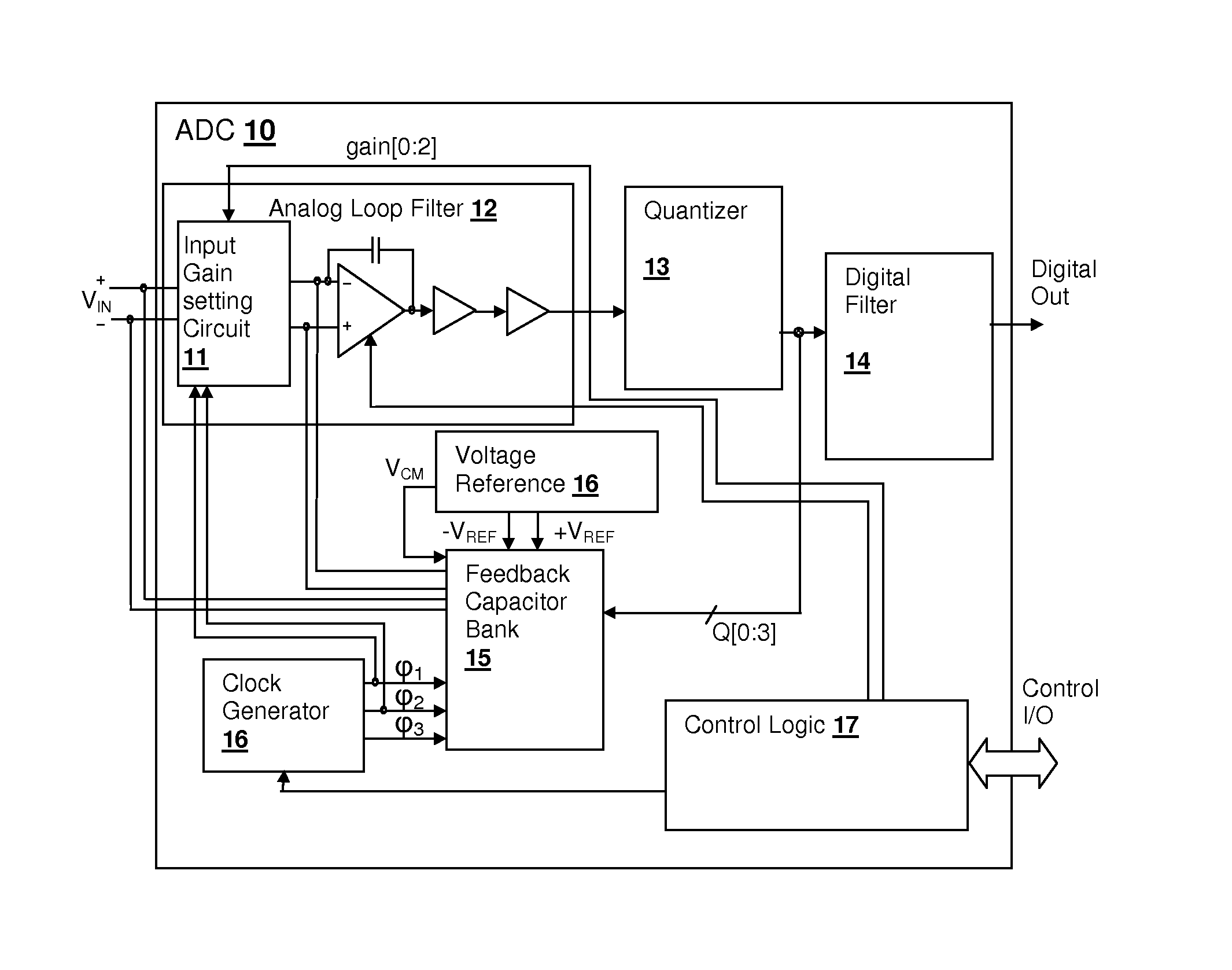Power-optimized analog-to-digital converter (ADC) input circuit
an analog-to-digital converter and input circuit technology, applied in the field of power-optimized analog-to-digital converter input circuits, can solve the problems of increasing non-linearity, affecting the efficiency of the circuit, and consuming a significant amount of the total power used by the adc, so as to achieve the effect of maximizing power over a wide range of bandwidth and noise requirements
- Summary
- Abstract
- Description
- Claims
- Application Information
AI Technical Summary
Benefits of technology
Problems solved by technology
Method used
Image
Examples
Embodiment Construction
[0015]The present invention encompasses input circuits for analog-to-digital (ADC) converter circuits, in which power consumption can be optimized by selecting a combination of input amplifier slices to yield a selectable power consumption for the combined input amplifier. The bandwidth and / or 1 / f noise corner can be tailored to a particular application and sample rate, and can be selected automatically in response to a selection of the sample rate of the converter. The use of amplifier slices, rather than adjusting the bias current of a single amplifier, preserves the DC operating point of the overall amplifier stage, resulting in simplified design and improved performance of the ADC converter. The programmable performance level of the overall amplifier further permits selection of the slew rate of the amplifier to drive selectable capacitive loads, such as when the input sampling capacitance or feedback capacitance of an integrator is changed to program the gain of the integrator....
PUM
 Login to View More
Login to View More Abstract
Description
Claims
Application Information
 Login to View More
Login to View More - R&D
- Intellectual Property
- Life Sciences
- Materials
- Tech Scout
- Unparalleled Data Quality
- Higher Quality Content
- 60% Fewer Hallucinations
Browse by: Latest US Patents, China's latest patents, Technical Efficacy Thesaurus, Application Domain, Technology Topic, Popular Technical Reports.
© 2025 PatSnap. All rights reserved.Legal|Privacy policy|Modern Slavery Act Transparency Statement|Sitemap|About US| Contact US: help@patsnap.com



